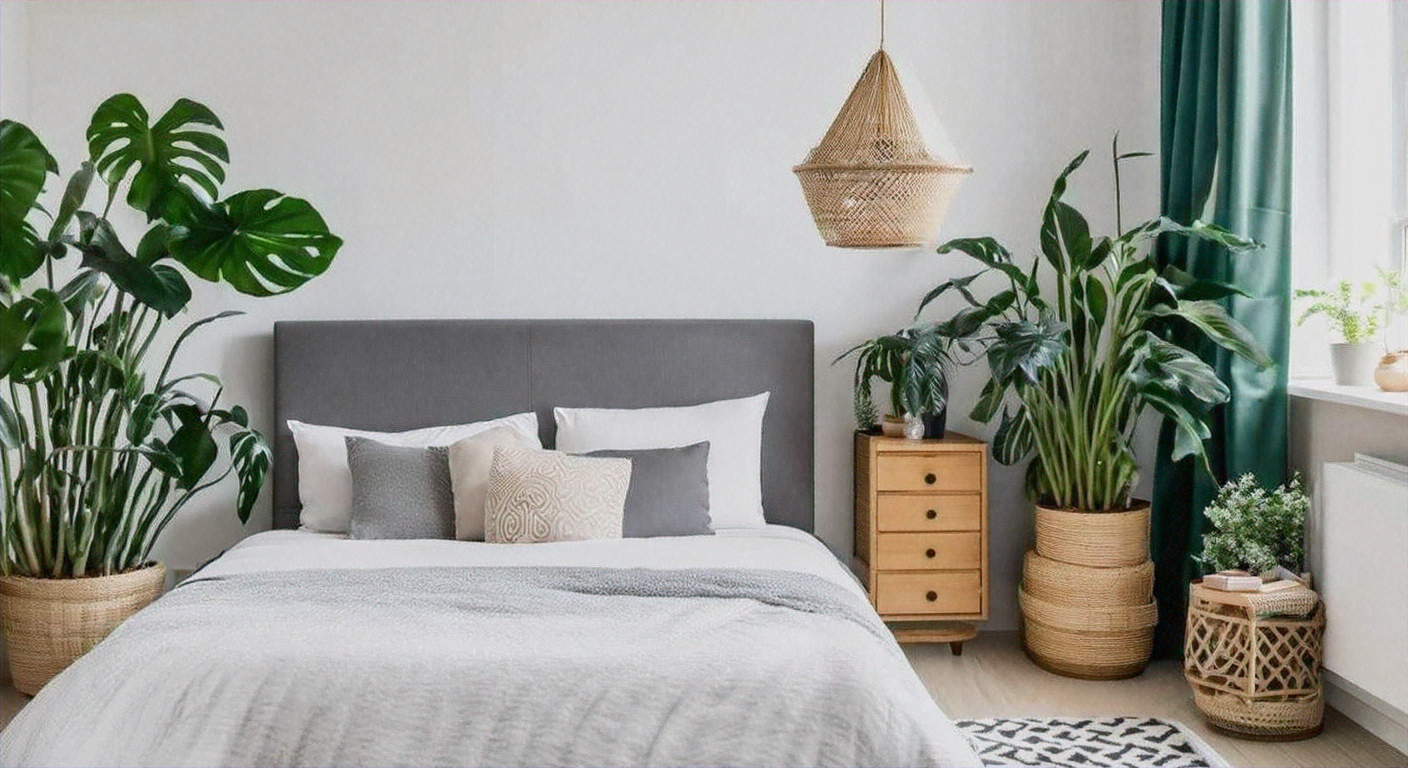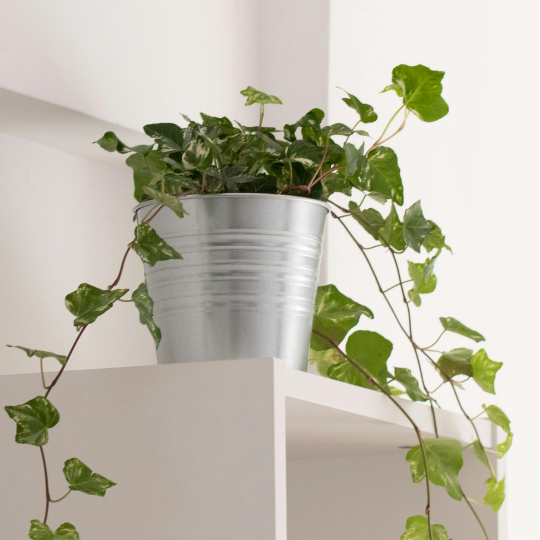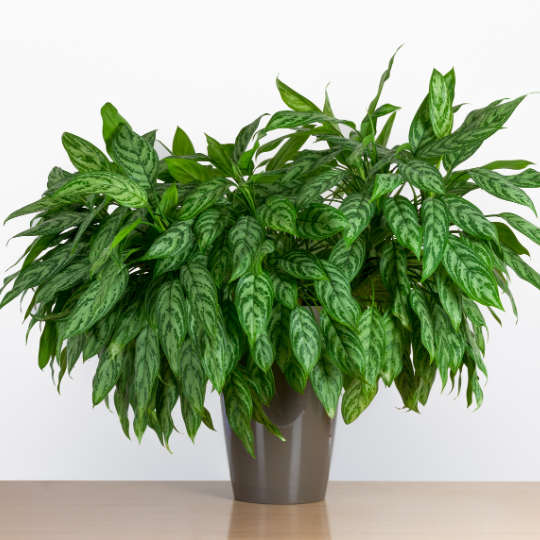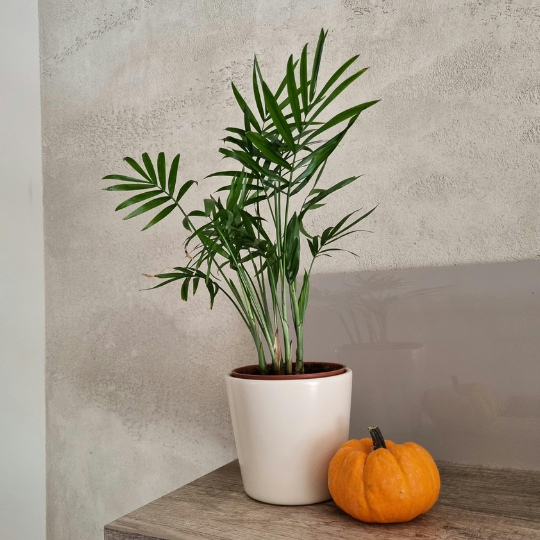From Better Sleep to Better Décor: Best Indoor Plants for Your Bedroom
Published On: 3 October 2024
There’s nothing quite like stepping into your bedroom at the end of a long day, ready to relax. Now imagine your space filled with plants that not only make the room feel more peaceful but also improve the indoor air quality.

With the right indoor plants, you can transform your bedroom into a tranquil sanctuary. This guide is packed with everything you need to know about the best plants for your bedroom and how to care for them.
Table of Content
- Why Add Indoor Plants to Your Bedroom?
- What’s the Most Important Thing to Consider When Choosing Bedroom Plants?
- Top 12 Indoor Plants For The Bedroom
- Indoor Plants That Help with Better Sleep
- 1. Snake Plant
- 2. Aloe Vera
- Indoor Plants That Help Purify Air in the Bedroom
- 3. English Ivy
- 4. Areca Palm
- Best Indoor Plants for Low Light Bedrooms
- 5. ZZ Plant
- 6. Philodendron
- 7. Chinese Evergreen
- Indoor Plants for Small Bedrooms
- 8. Spider Plant
- 9. Lucky Bamboo
- Low Maintenance Indoor Plants for Bedrooms
- 10. Pothos
- 11. Rubber Plant
- 12. Parlor Palm
- Common Mistakes to Avoid
- Conclusion: Transform Your Bedroom with Greenery
Why Add Indoor Plants to Your Bedroom?
Indoor plants in your bedroom offer a variety of benefits, where the goal is rest and relaxation:
-
Air Purification: Many bedroom plants naturally filter toxins from the air, helping you breathe better while improving the room's air quality.
-
Stress Reduction: Research shows that being surrounded by greenery can help reduce stress levels, which is crucial for creating a relaxing bedroom environment.
-
Enhanced Aesthetics: Plants elevate the style of any space, adding texture, color, and a touch of nature.
-
Better Sleep: Some plants, like lavender and jasmine, emit soothing fragrances that promote restful sleep.
What’s the Most Important Thing to Consider When Choosing Bedroom Plants?
When selecting plants for the bedroom, consider light conditions, maintenance, and room size:
-
Light Conditions: Bedrooms often have limited natural light. It’s important to match your plant choice with the available light. Low-light plants like snake plants, ZZ plants, and pothos can thrive in dimly lit spaces.
-
Maintenance: Some plants are more forgiving than others. If you’re a beginner or adding a new plant to your collection, choose low-maintenance plants like succulents or spider plants.
-
Room Size: For small bedrooms, opt for compact plants like aloe vera, while larger spaces can accommodate statement plants like a fiddle-leaf fig or Monstera deliciosa.
Top 12 Indoor Plants For The Bedroom
Check out the list of best indoor plants that add more than just beauty to your bedroom:
Indoor Plants That Help with Better Sleep
The right plants can contribute to a peaceful atmosphere in your bedroom, encouraging better sleep and tranquility. These indoor plants are known for their calming scents and ability to promote relaxation.
1. Snake Plant
The Snake Plant is one of the best plants for the bedroom, offering the unique benefit of releasing oxygen at night, which can improve indoor air quality and enhance sleep. It's a low-maintenance plant that thrives in indirect light but can adapt to low light as well. Place this plant on a nightstand or a corner of the room for better air purification.
-
Light Requirements: Prefers indirect sunlight but tolerates low light well.
-
Watering Needs: Requires minimal watering; water only when the soil feels dry.
-
Benefits: Improves air quality, reduces indoor air pollutants like formaldehyde and benzene, and enhances relaxation.

2. Aloe Vera
A succulent plant that not only looks great in a bedroom setting but also improves the quality of air by releasing oxygen at night. This hardy plant is ideal for plant parents looking for a no-fuss plant that brings positive energy and helps with better sleep.
-
Light Requirements: Bright light is ideal, but Aloe Vera can adapt to low light conditions as well. Place near a window with filtered sunlight.
-
Watering Needs: Let the soil dry out completely before watering. Aloe Vera thrives in drier conditions and doesn’t need much water.
-
Benefits: Acts as a natural air-purifier, releasing oxygen and creating a calm sleep environment.

Indoor Plants That Help Purify Air in the Bedroom
Indoor air quality is essential for a restful sleep, and some plants are particularly effective at removing toxins and pollutants.
3. English Ivy
English Ivy is one of the best plants to keep for improving indoor air quality. Its vines and dark green leaves can trail beautifully around a hanging basket or a small pot, making it an attractive plant choice for bedrooms.
-
Light Requirements: Thrives in bright, indirect light but can tolerate lower light as well.
-
Watering Needs: Keep the soil slightly moist; mist occasionally to keep the foliage fresh.
-
Benefits: Helps filter out airborne mold and indoor air pollutants like formaldehyde and benzene. Perfect for enhancing the air quality in bedrooms.

4. Areca Palm
The Areca Palm is a popular indoor plant that acts as an excellent air purifier and is also known to add a touch of elegance to bedrooms. This plant can thrive with indirect sunlight, so it fits well in most indoor spaces.
-
Light Requirements: Thrives in indirect light but needs bright light for optimal growth.
-
Watering Needs: Requires regular watering to keep the soil moist, but make sure to allow the top inch of soil to dry out between waterings.
-
Benefits: Removes indoor air pollutants effectively and creates a fresh and vibrant bedroom environment.

Best Indoor Plants for Low Light Bedrooms
If your bedroom has limited natural light, opt for plants that can thrive in dim conditions.
5. ZZ Plant
The ZZ Plant is one of the most tolerant plants for bedrooms with lower light conditions. Its thick, waxy leaves are not only eye-catching but also excellent for bedrooms that don’t get much sunlight. This is a plant that thrives in indirect light, making it a great choice for darker spaces.
-
Light Requirements: Can survive in low to moderate light; ideal for rooms with minimal natural light.
-
Watering Needs: Water sparingly; only when the soil feels dry.
-
Benefits: Its shiny leaves add elegance, and its low-maintenance nature makes it a perfect plant for busy individuals.

6. Philodendron
Philodendrons are popular indoor plants that thrive in low light and offer lush green foliage, adding a touch of nature to dim bedrooms. They come in various varieties with heart-shaped leaves, making them aesthetically pleasing and easy to integrate into bedroom decor.
-
Light Requirements: Philodendrons are quite adaptable and can grow well in both low to bright indirect light.
-
Watering Needs: Philodendrons prefer their soil to be slightly moist but can tolerate periods of dryness. Ensure the top inch of soil is dry before watering to avoid overwatering.
-
Benefits: Philodendrons are also known for their air-purifying qualities. They are also very low-maintenance and can adapt to indoor conditions, making them one of the best plants for your bedroom.

7. Chinese Evergreen
The Chinese Evergreen is one of the best bedroom plants for those who have little time for plant care. With its wide, colorful leaves, it brings a touch of greenery and vibrancy to any bedroom without needing direct light.
-
Light Requirements: Prefers low light conditions and can handle indirect sunlight, making it ideal for rooms with limited natural light.
-
Watering Needs: Keep the soil lightly moist, allowing the top inch to dry before watering again.
-
Benefits: Adds to the room’s aesthetics while being low-maintenance and air-purifying.

Indoor Plants for Small Bedrooms
For compact spaces, select plants that don’t take up much room but still add greenery to your space.
8. Spider Plant
Spider Plants are great for small bedrooms due to their compact size and air-purifying benefits. With their arching leaves and tiny "baby spider plants," they make excellent hanging or potted plants for shelves and corners.
-
Light Requirements: Thrives in bright, indirect light but can tolerate low light.
-
Watering Needs: Water when the top inch of soil is dry.
-
Benefits: Known to filter out indoor air pollutants and adds freshness without taking up much space.

9. Lucky Bamboo
The Lucky Bamboo is another ideal choice for small bedrooms, bringing good luck, prosperity, and an elegant touch to the room. Its compact size allows it to fit anywhere, from bedside tables to shelves.
-
Light Requirements: Prefers indirect light and can thrive in lower light levels.
-
Watering Needs: Grows best in water, so keep the roots submerged in water and change it weekly to keep the plant healthy.
-
Benefits: Symbolizes positive energy and good fortune, adding a touch of nature and elegance to compact bedroom spaces.

Low Maintenance Indoor Plants for Bedrooms
These bedroom plants are easy to care for and are great for those who want greenery without much hassle.
10. Pothos
The Pothos, also known as "Devil’s Ivy," is one of the best low-maintenance plants for any bedroom. With its heart-shaped leaves and trailing vines, Pothos adds a lush green touch to any corner, shelf, or bedside.
-
Light Requirements: Thrives in both bright and low light. It’s adaptable to different indoor light conditions.
-
Watering Needs: Let the soil dry out between waterings, making it an easy plant for beginners.
-
Benefits: Adds greenery effortlessly and is easy to care for, making it perfect for those who want a no-fuss plant in their bedroom.

11. Rubber Plant
The Rubber Plant is an excellent low-maintenance houseplant, known for its deep green, shiny leaves. It can grow tall, but it also fits well in small pots, making it suitable for various room sizes.
-
Light Requirements: Prefers bright, indirect light but can adapt to lower light conditions.
-
Watering Needs: Allow the top inch of soil to dry out before watering. The Rubber Plant is quite drought-tolerant.
-
Benefits: Easy to care for and adaptable to indoor spaces, making it a hassle-free choice for any bedroom.

12. Parlor Palm
The Parlor Palm is a popular indoor plant choice for bedrooms, known for its lush, feathery fronds that bring a tropical feel to any space. Its elegant appearance and low maintenance needs make it one of the best plants to include in your bedroom.
-
Light Requirements: Thrives in bright, indirect light but is also adaptable to lower light conditions, making it ideal for bedrooms that don't receive much natural light. However, avoid placing it in direct sunlight as that can scorch its delicate fronds.
-
Watering Needs: This palm prefers to be watered when the top inch of soil feels dry to the touch. It's important to keep the soil moist but not waterlogged. Overwatering can lead to root rot, so make sure the pot has proper drainage.
-
Benefits: The Parlor Palm is not only a low-maintenance plant but also helps improve air quality by filtering toxins. It adds a touch of greenery to your space without needing constant care, making it perfect for plant parents who want a beautiful yet manageable bedroom plant.

Common Mistakes to Avoid
Avoid these pitfalls when caring for your bedroom plants:
-
Overwatering: Many people kill their plants by watering too much. Always let the soil dry before watering.
-
Choosing the Wrong Pot: A pot without proper drainage can cause root rot. Always use pots with drainage holes.
-
Improper Placement: Make sure your plants are getting the right amount of light. Avoid placing low-light plants in direct sunlight.
Conclusion: Transform Your Bedroom with Greenery
Adding plants to your bedroom does more than improve its aesthetics—it enhances your well-being. Whether you’re looking for air-purifying plants, mood-boosters, or pet-safe options, there’s a plant for every space. By selecting the right plants and placing them strategically, you can create a sanctuary that promotes relaxation, health, and a peaceful night’s sleep.
Start small, find the plants that resonate with your space, and watch as they enhance the energy, health, and beauty of your room!
Read Next...
Affiliate Disclaimer:
This website contains affiliate links. All that means for you is that if you click on one of my links and make a purchase, I receive a small commission. This helps me keep this content 100% free! But rest assured, I only recommend products I know and trust! Happy Planting!

